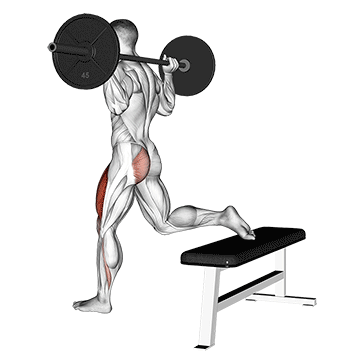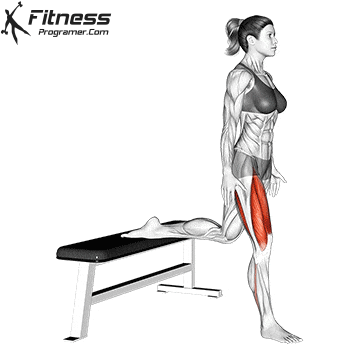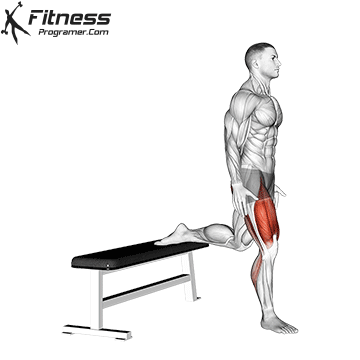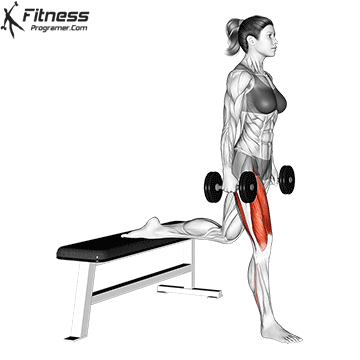Overview
The Bulgarian split squat is a unilateral lower-body exercise where one foot remains on the ground while the other is elevated behind you on a bench. Adding a barbell increases resistance, making it more effective for muscle growth, strength, and stability. This exercise targets the quadriceps, glutes, and hamstrings while requiring strong core engagement to maintain balance. It is commonly used in strength training, athletic conditioning, and injury prevention.
How to Perform the Barbell Bulgarian Split Squat

Step 1: Setup and Positioning
-
Set up a bench behind you at about knee height.
-
Load a barbell onto your upper back in a low-bar or high-bar position.
-
Stand about two feet in front of the bench with your feet hip-width apart.
-
Place the top of your back foot on the bench and engage your core.
Step 2: Execution
-
Lower yourself by bending your front knee, keeping your chest upright.
-
Descend until your front thigh is parallel to the floor or slightly below.
-
Press through your front heel to drive back up to the starting position.
-
Repeat for the desired reps, then switch legs.
Tips for Proper Form
-
Keep your front knee aligned with your toes to avoid excess strain.
-
Control the movement to prevent wobbling or losing balance.
-
Engage your core and glutes for added stability.
-
Maintain an upright torso and avoid leaning too far forward.
-
Adjust your stance so that your front leg does most of the work.
Common Mistakes to Avoid
-
Placing the back foot too high, causing discomfort in the knee.
-
Leaning excessively forward, reducing glute activation.
-
Allowing the front knee to collapse inward, increasing injury risk.
-
Using momentum instead of controlled movement, reducing muscle engagement.
-
Not keeping a stable core, leading to poor balance.
Benefits of the Barbell Bulgarian Split Squat
-
Increases Lower-Body Strength: Targets the quadriceps, glutes, and hamstrings with greater resistance.
-
Enhances Balance and Stability: The unilateral movement improves coordination and core strength.
-
Improves Flexibility and Mobility: Increases hip and ankle mobility, promoting better movement patterns.
-
Reduces Muscle Imbalances: Strengthens each leg individually, correcting weaknesses.
-
Minimizes Spinal Load: Unlike traditional back squats, this exercise places less pressure on the lower back.
Muscles Worked




